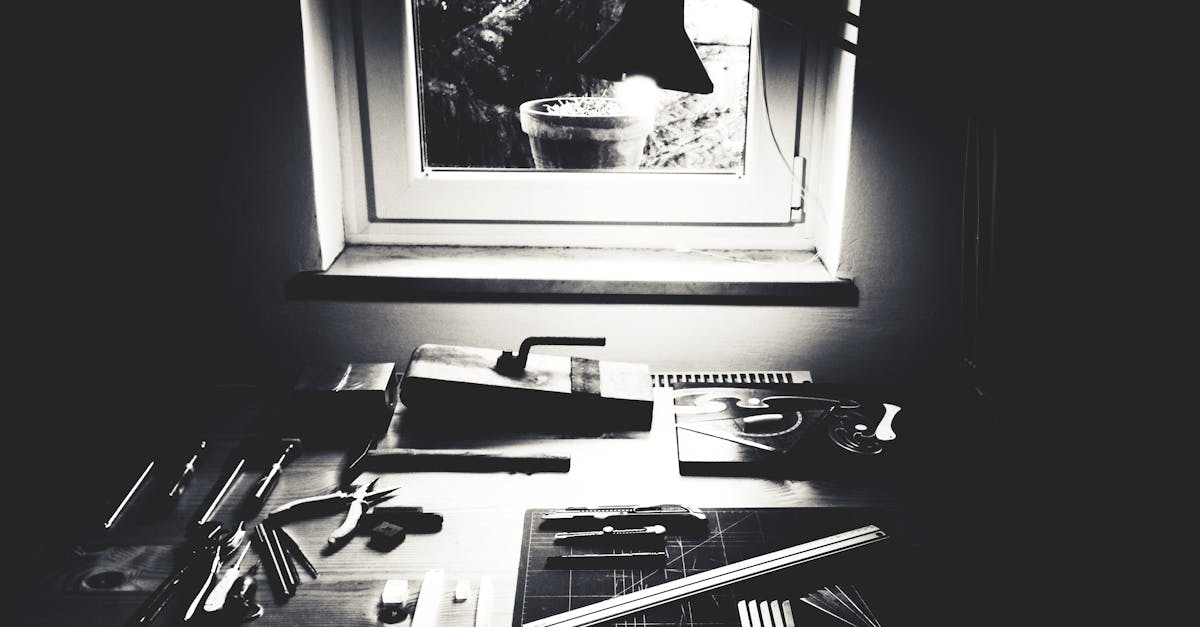
Table Of Contents
Backflow Prevention Maintenance
Backflow prevention maintenance is crucial in ensuring the continued efficiency of plumbing systems. Regular upkeep of backflow prevention devices is essential to prevent contamination of potable water. Service providers in Victoria recommend annual inspections and testing to guarantee that backflow devices are functioning correctly. By staying proactive with maintenance, property owners can avoid potential health hazards and costly repairs associated with backflow incidents.
Maintaining backflow prevention devices involves checking for any signs of wear and tear, ensuring proper installation, and testing the functionality of the system. In Victoria, licensed plumbers are equipped to handle the maintenance and testing of backflow prevention devices in residential and commercial properties. Proper maintenance not only safeguards the quality of water supply but also contributes to the overall safety and wellbeing of individuals in the community.
Importance of Regular Testing and Inspections
Regular testing and inspections play a vital role in ensuring the effectiveness of backflow prevention systems. In Australia, particularly in Victoria, these measures are imperative for maintaining the safety and quality of the public water supply. By conducting routine checks and assessments of backflow prevention devices, water authorities can identify any issues or malfunctions promptly and address them before they escalate into larger problems.
The importance of regular testing and inspections extends beyond compliance requirements; it is essential for safeguarding public health and preventing contamination of the water supply. By adhering to a consistent maintenance schedule, property owners can contribute to the overall protection of the community's water resources. Backflow prevention in Victoria relies on the diligence of individuals and professionals alike to uphold the standards necessary for preserving water quality and ensuring the well-being of residents.
Signs of Backflow Issues
Plumbing systems are designed to function efficiently and safely, but when backflow occurs, it can pose significant health risks. Signs of backflow issues in plumbing systems can indicate potential contamination. Stagnant water, unusual tastes or odours coming from taps, and a noticeable drop in water pressure are all signals that there may be backflow problems. These signs should not be overlooked, as they could signify a breach in the system's integrity which could compromise water quality and safety. Backflow prevention in Victoria requires vigilance and prompt action to address any warning indicators.
Additionally, discoloured water, sudden temperature fluctuations, or the presence of rust in the water supply can suggest backflow issues. The appearance of bubbles, gurgling sounds in pipes, or water pooling where it shouldn't be are also causes for concern. Understanding and recognising these symptoms are crucial for protecting the water supply from contaminants and preserving the health of individuals. Backflow prevention in Victoria relies on early detection and intervention to safeguard the community's water sources and prevent potentially harmful impacts on public health.
Recognizing Symptoms of Backflow in Plumbing Systems
When it comes to recognising symptoms of backflow in plumbing systems, there are a few key indicators to be aware of. Discoloured water coming out of faucets, a noticeable decrease in water pressure, or a strange taste or odour in the water can all point towards potential backflow issues. It is essential to stay vigilant and address any of these signs promptly to prevent any further contamination of your water supply. Backflow prevention in Victoria mandates that homeowners pay close attention to these warning signals and take action immediately if they are detected.
Another common symptom of backflow is water leaking from the backflow prevention device itself. This leakage can manifest in the form of visible water pooling around the device or a constant drip. Ignoring such visible signs can lead to serious health hazards and contamination risks. Regular inspection and maintenance of backflow prevention devices in plumbing systems can help detect these symptoms early on and ensure the safety and quality of the water supply in residential settings.
Backflow Prevention in Residential Settings
Backflow prevention in residential settings is a crucial aspect of maintaining a safe and efficient plumbing system. In Victoria, ensuring that backflow prevention measures are in place is not only a matter of compliance with regulations but also a means of safeguarding the health and well-being of residents. By implementing backflow prevention devices in residential properties, homeowners can significantly reduce the risk of contaminated water flowing back into the main water supply.
In residential settings, implementing backflow prevention measures involves installing appropriate devices such as backflow prevention valves. These devices are designed to prevent the reversal of water flow, ensuring that clean water remains separate from potentially contaminated water sources. Regular maintenance and testing of these devices are essential to ensure their proper functionality and effectiveness in preventing backflow incidents. Homeowners in Victoria should consider consulting with qualified plumbing professionals to assess their backflow prevention needs and implement suitable measures to protect their household water supply.
Implementing Backflow Prevention Measures in Homes
Implementing backflow prevention measures in homes is crucial for safeguarding the quality of water supply and ensuring the health and safety of residents. In Victoria, backflow prevention is a key aspect of maintaining the integrity of plumbing systems and preventing contamination of potable water sources. Homeowners should consider installing backflow prevention devices such as check valves or backflow preventer assemblies to mitigate the risk of backflow incidents.
Regular inspection and maintenance of backflow prevention devices are essential to ensure their proper functioning. Homeowners in Victoria should follow the guidelines set by local authorities and have their backflow prevention devices tested annually by a licensed plumber. By taking proactive measures and investing in adequate backflow prevention systems, residents can contribute to a safer and healthier living environment for themselves and their communities.
FAQS
What is backflow prevention?
Backflow prevention is the practice of ensuring that water flows in one direction only within a plumbing system, preventing contaminated water from flowing back into the clean water supply.
Why is backflow prevention important?
Backflow prevention is important to protect the quality of drinking water and prevent the risk of contamination. It helps maintain the integrity of the water supply and ensures the safety of individuals using the water.
How can I recognize the signs of backflow issues in my plumbing system?
Signs of backflow issues may include a noticeable change in water pressure, strange odors or tastes in the water, or visible discoloration of the water. If you notice any of these signs, it is important to address the issue promptly.
What are some symptoms of backflow in plumbing systems?
Symptoms of backflow in plumbing systems may include cross connections, back-siphonage, or backpressure events. These can lead to the contamination of the water supply and pose health risks to individuals.
How can I implement backflow prevention measures in my home?
To implement backflow prevention measures in residential settings, you can install backflow prevention devices, conduct regular testing and inspections, and ensure that your plumbing system is properly maintained. It is important to follow local regulations and guidelines to protect the water supply.


